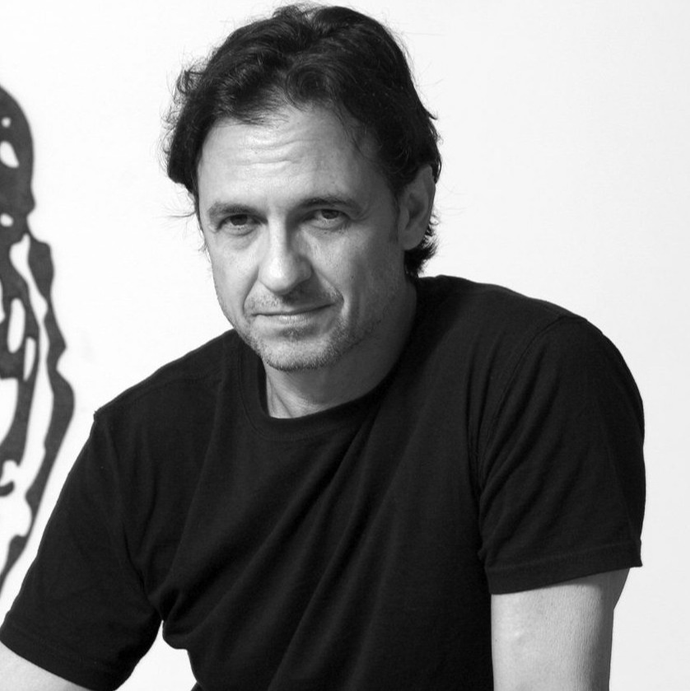
Daniel Senise
Daniel Senise is among the prominent figures of Brazil's Generation 80s, a movement driven by a collective aspiration to revive and reintegrate painting into the Brazilian artistic landscape.
Biography of Daniel Senise
Daniel Senise was born in 1955 in Rio de Janeiro, Brazil. He completed his civil engineering degree in 1980 at the Universidade Federal do Rio de Janeiro (UFRJ) and pursued Arts studies at the Escola de Artes Visuais do Parque Lage (EAV—School of Visual Arts) from 1981 to 1983.
Senise served as a painting professor at the EAV-School of Visual Arts in Rio de Janeiro from 1985 to 1996.
The artist has taken part in numerous biennials, such as those in São Paulo in 1985, 1989, and 1998, the Biennial de La Habana in 1986, and the Venice Biennale in 1990, among others.
Since the eighties, Daniel Senise has been showcasing his works widely. Recent solo exhibitions include "The site of images" at Nara Roesler in New York (2023), "Biógrafo" at Museu de Arte Contemporanea da USP (MAC-USP) in São Paulo (2023), "Verônica" at Nara Roesler in São Paulo (2022), "Eu vivo confortavelmente no museu" at Galeria Filomena Soares in Lisbon (2022), and "Museu do Recôncavo" at Galeria Paulo Darzé in Salvador (2019).
The artist lives and works between São Paulo and Rio de Janeiro.
Daniel Senise's Art Style
Since the late 1990s, Senise's approach can be characterized as the "construction of images." He initiates his process by imprinting the textures of surfaces—like wooden floors or concrete walls—from meticulously selected locations onto textiles, akin to the monotype technique. Once prepared, this material serves as the foundation or framework of his work, serving either as a canvas for further manipulation, as components in collages to form new images, or alternatively, as fragments added onto printed photographs.
Senise's inquiries frequently delve into the memory associated with locations and environments. Beyond figuratively depicting specific places, he incorporates objects discovered within those locales, like broken ceramics, wooden fragments, dust, or wall chippings. Thus, he intertwines the portrayal of a site with its remnants, effectively weaving together its history—he juxtaposes time, memory, and the tangible presence derived from them.
Years:
Born in 1955
Country:
Brazil, Rio de Janeiro
Personal website